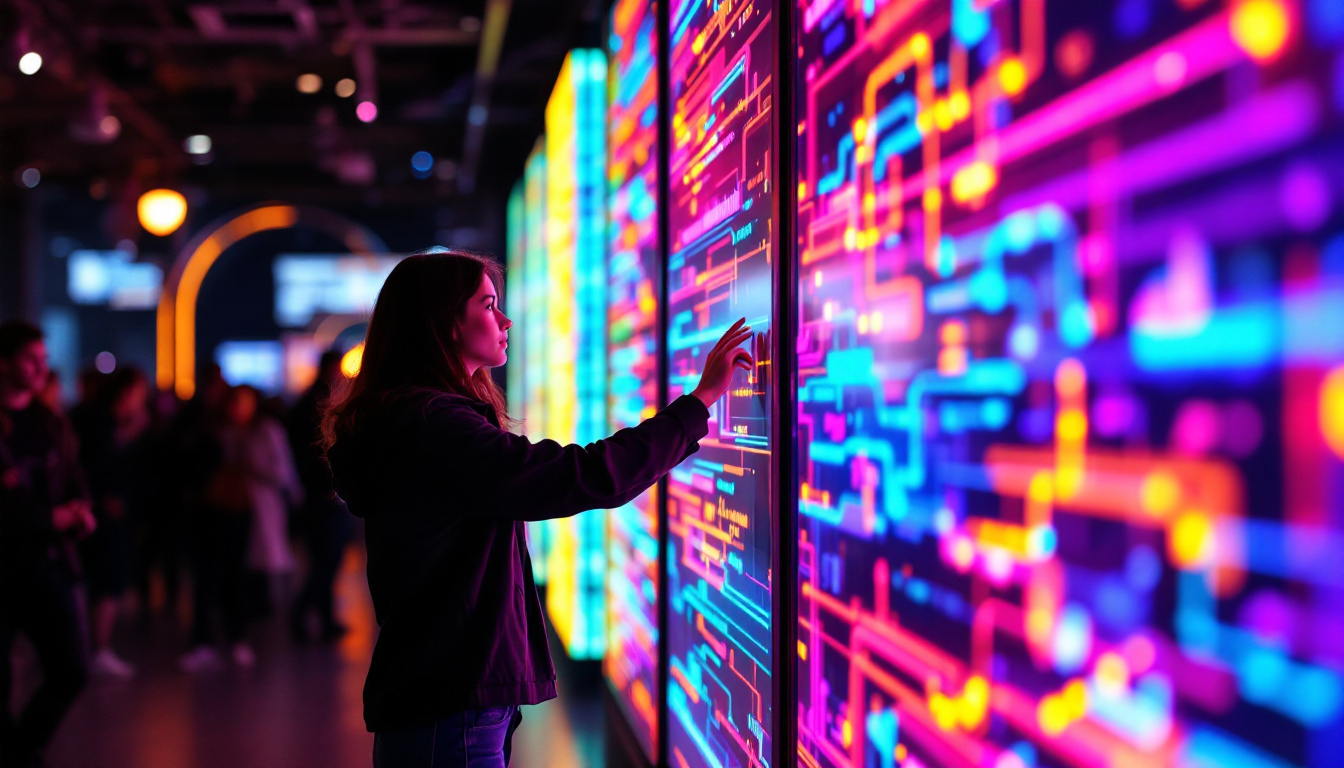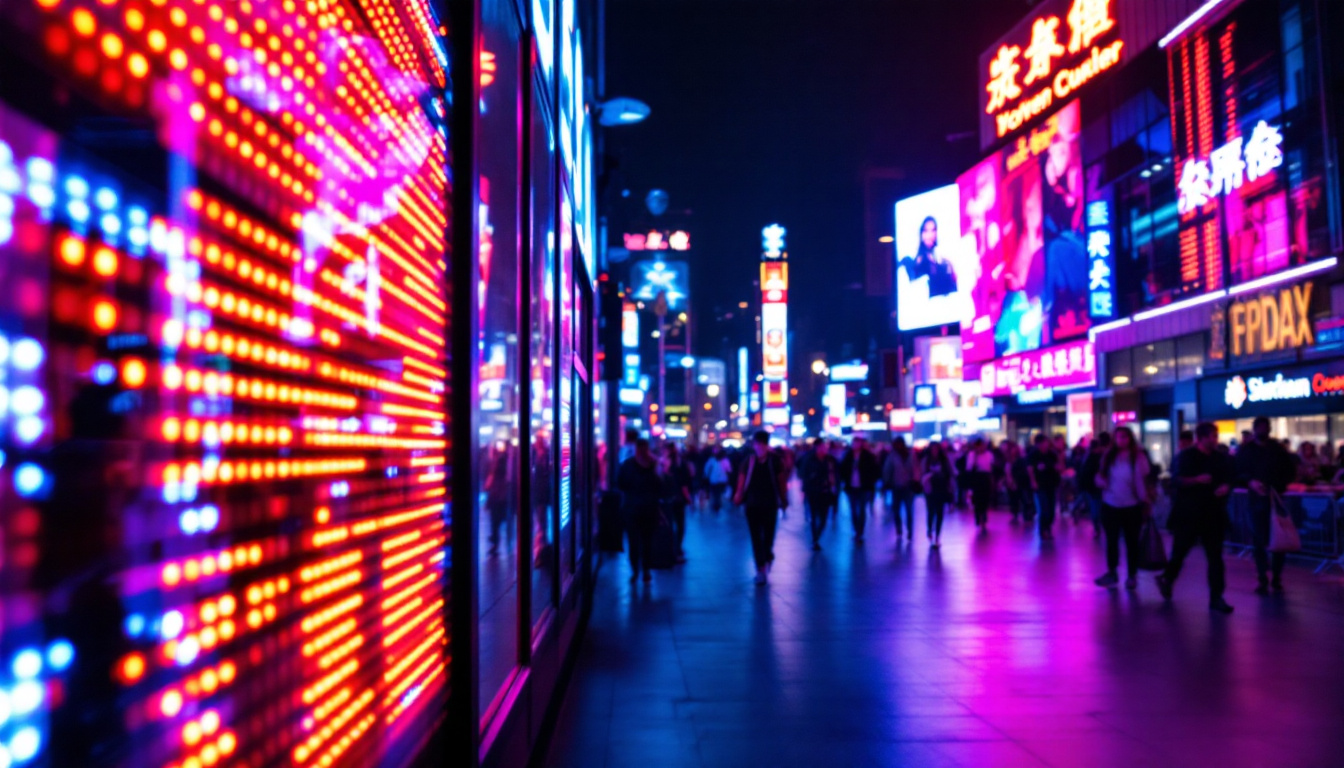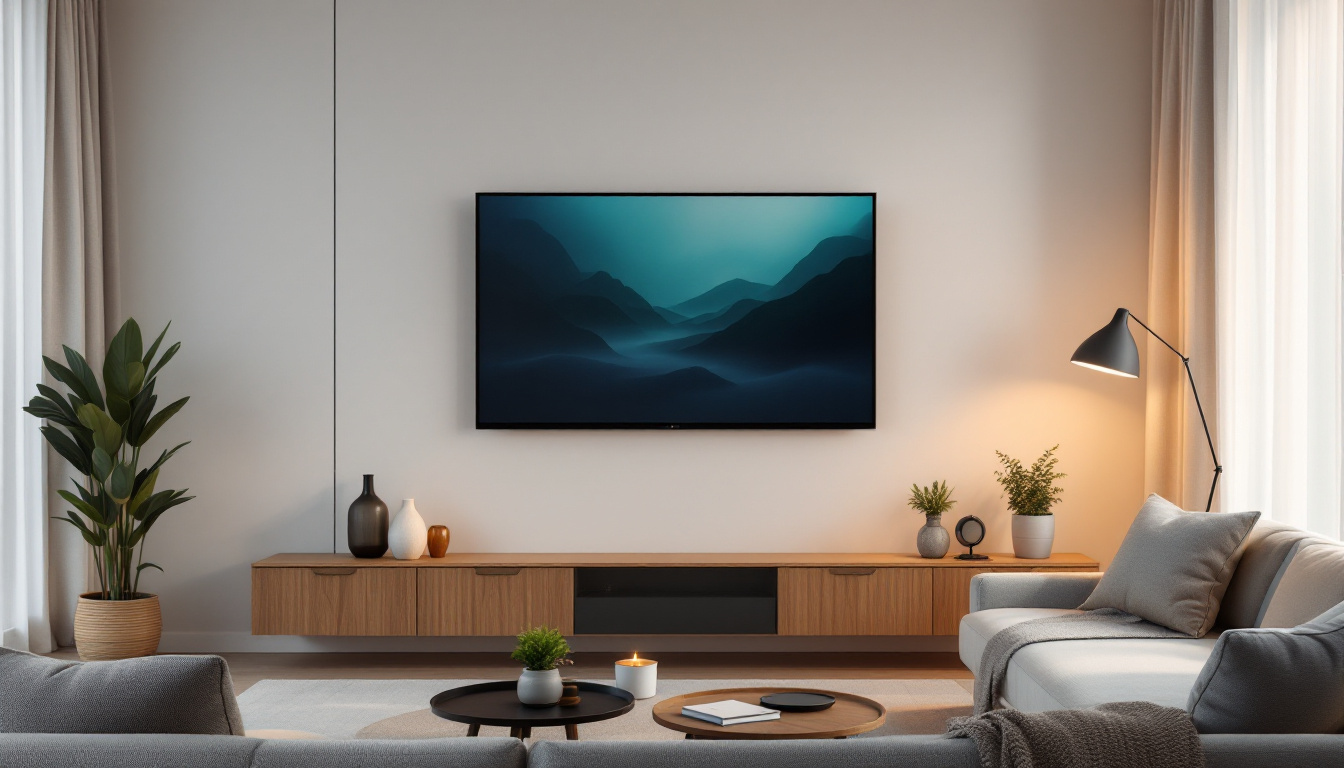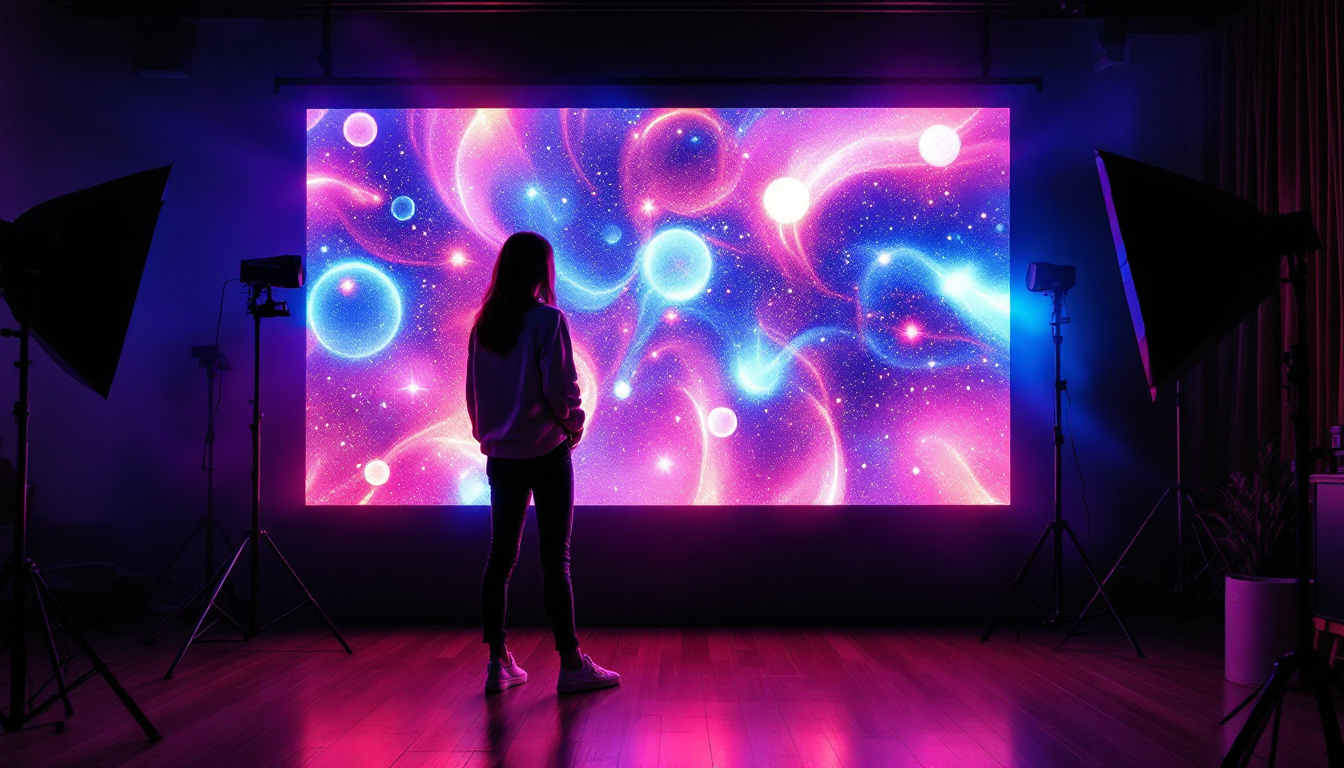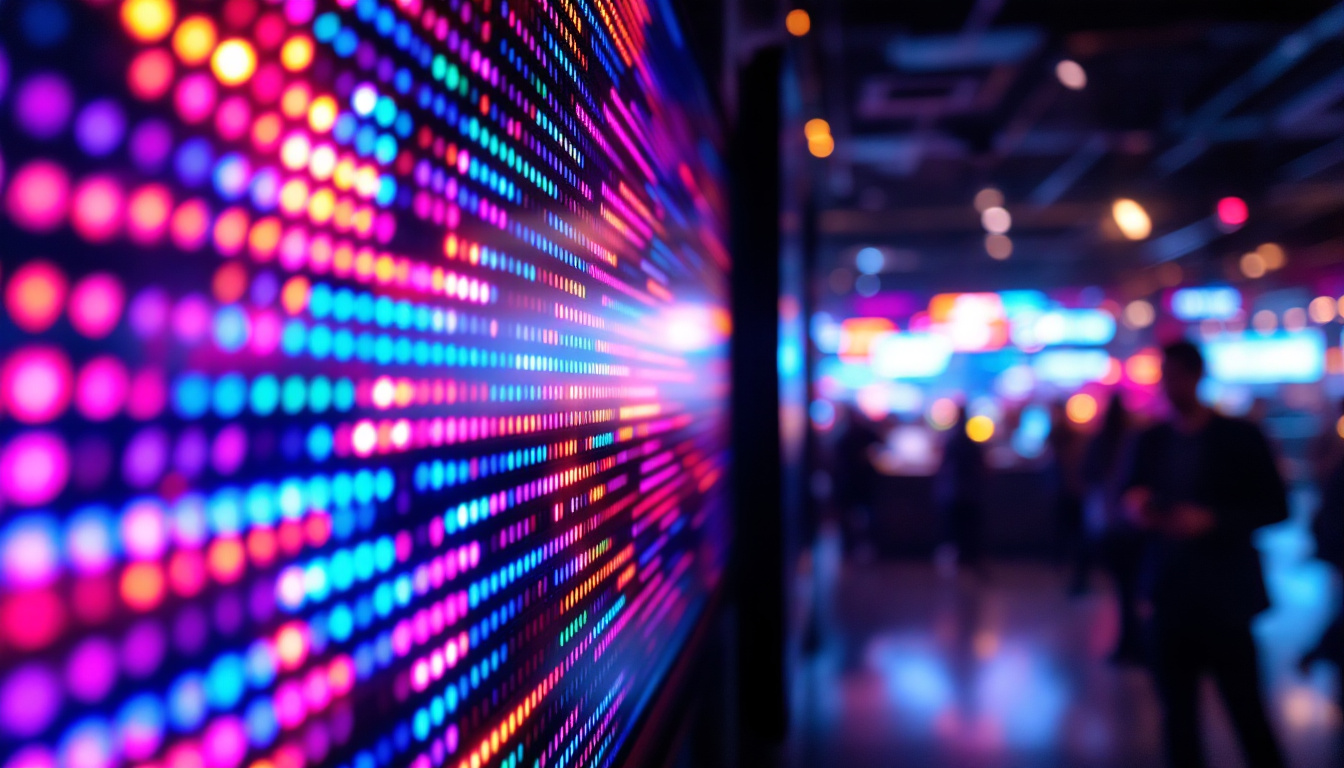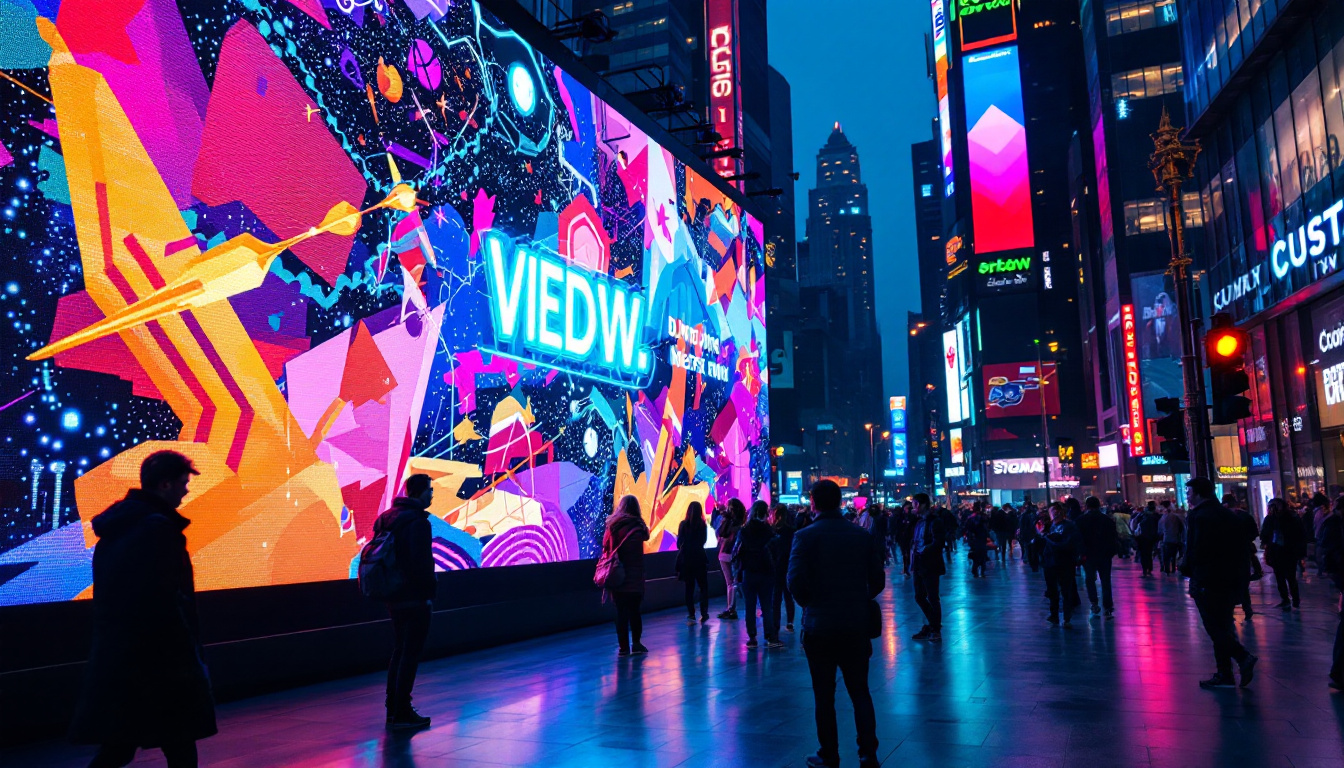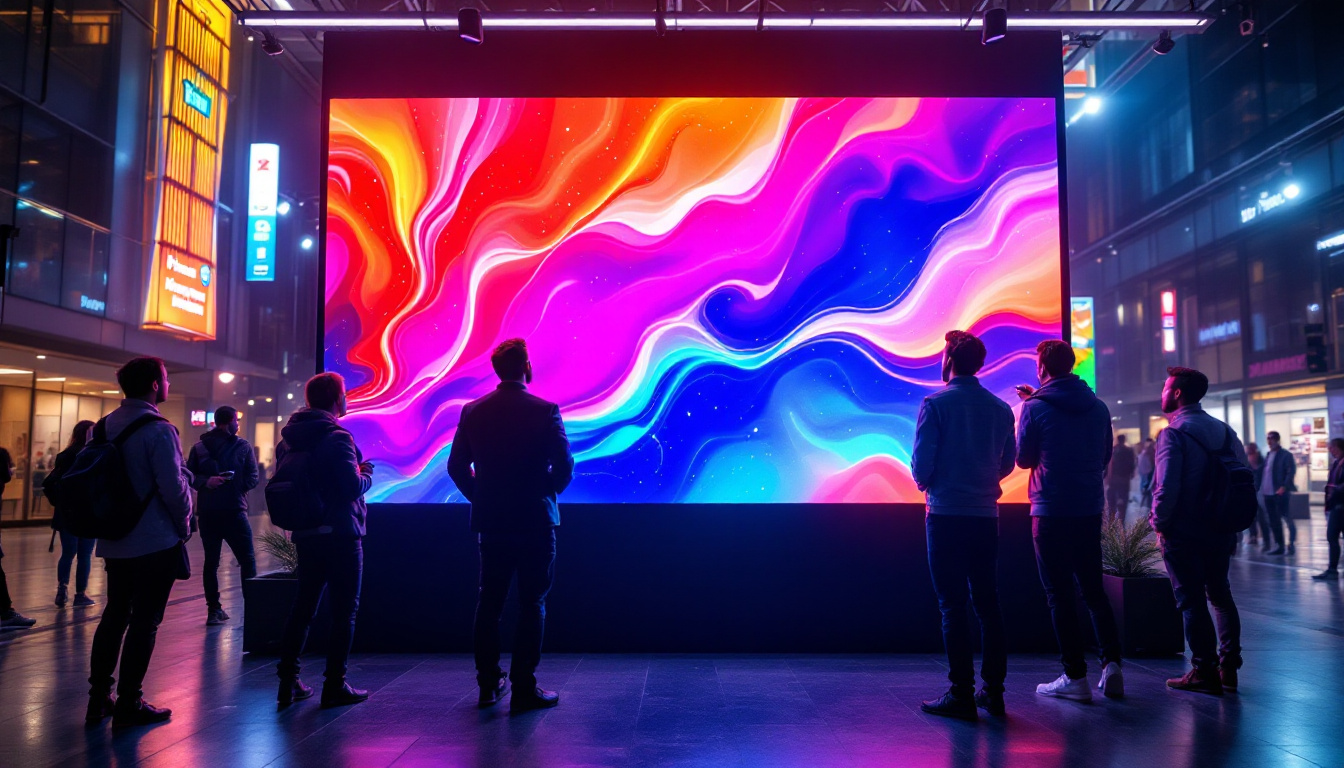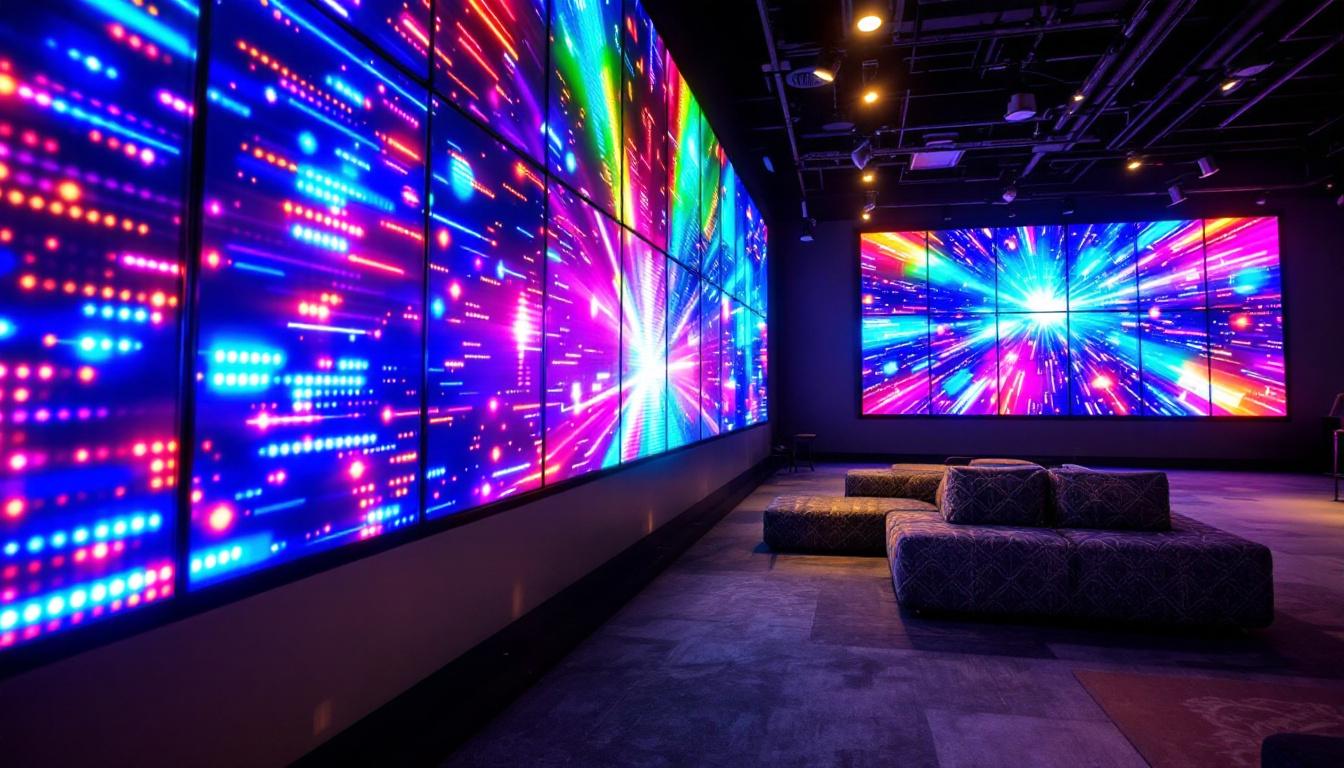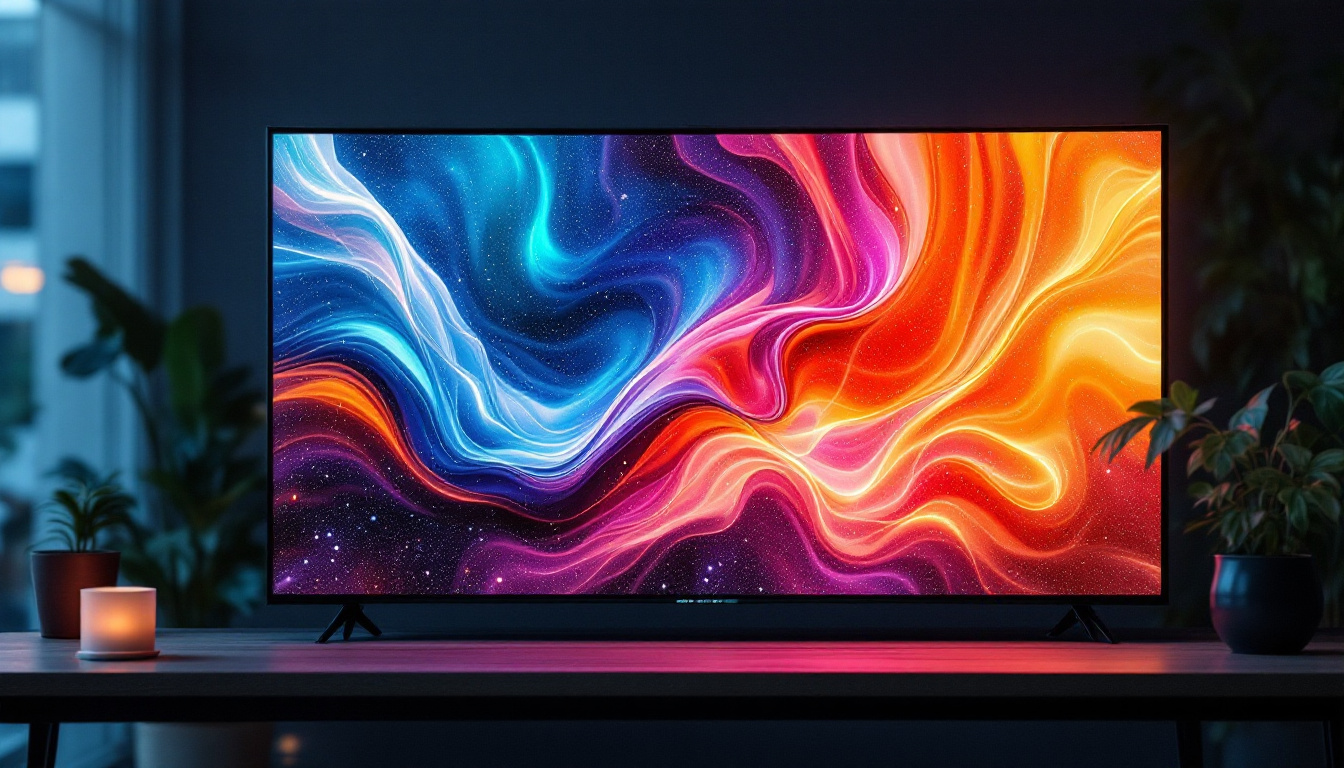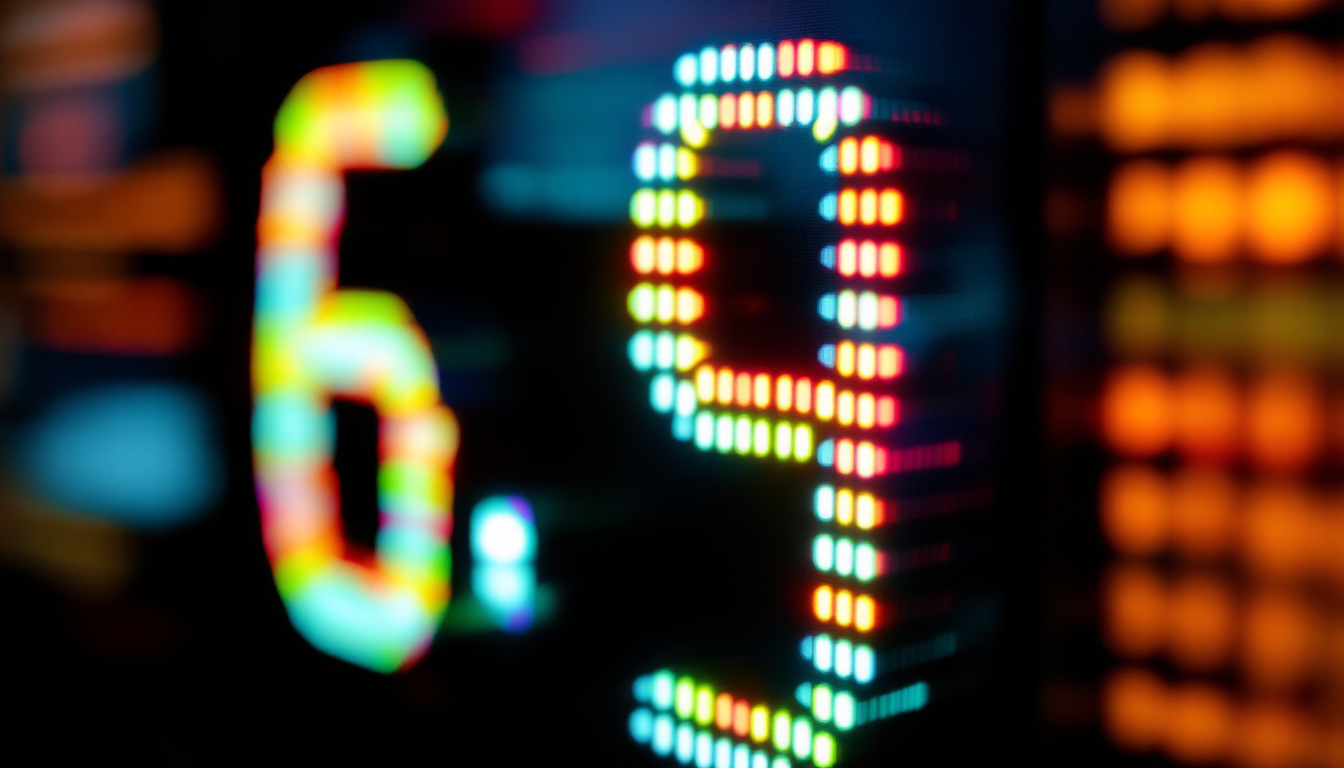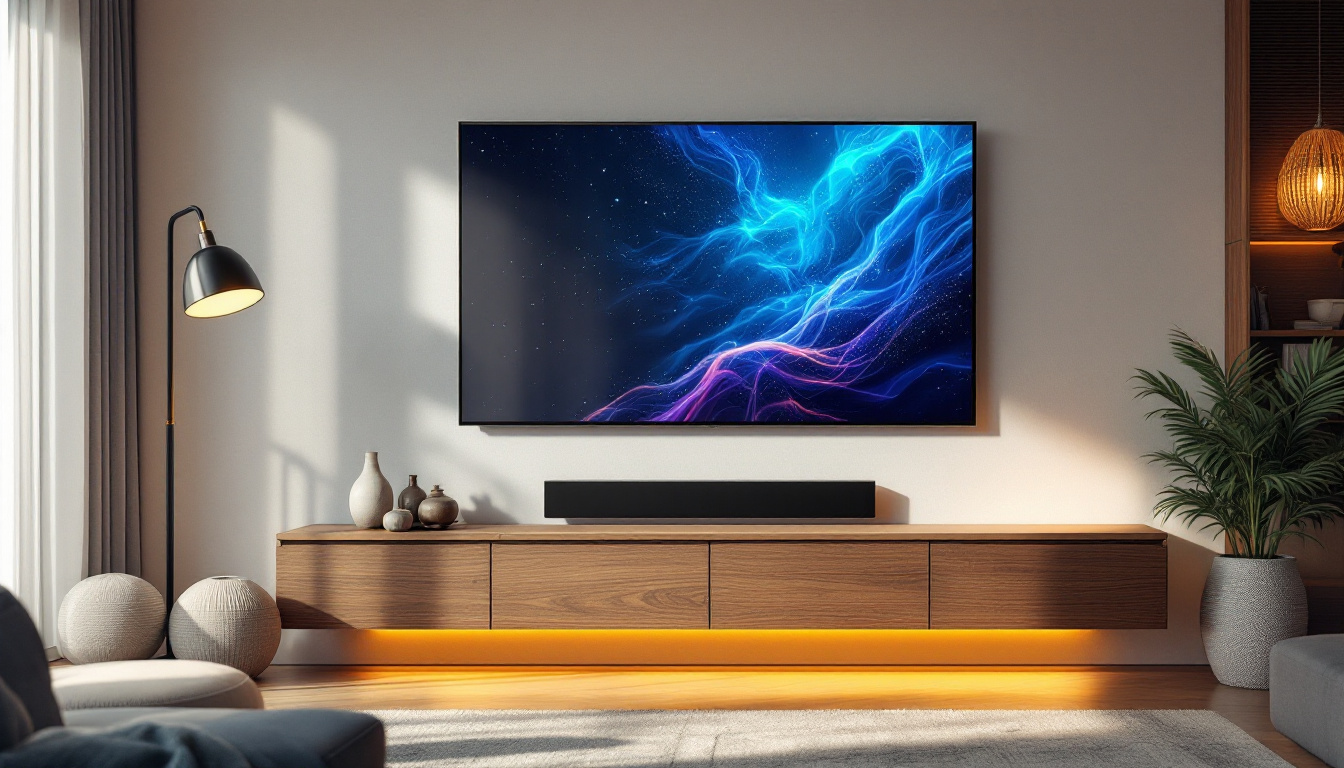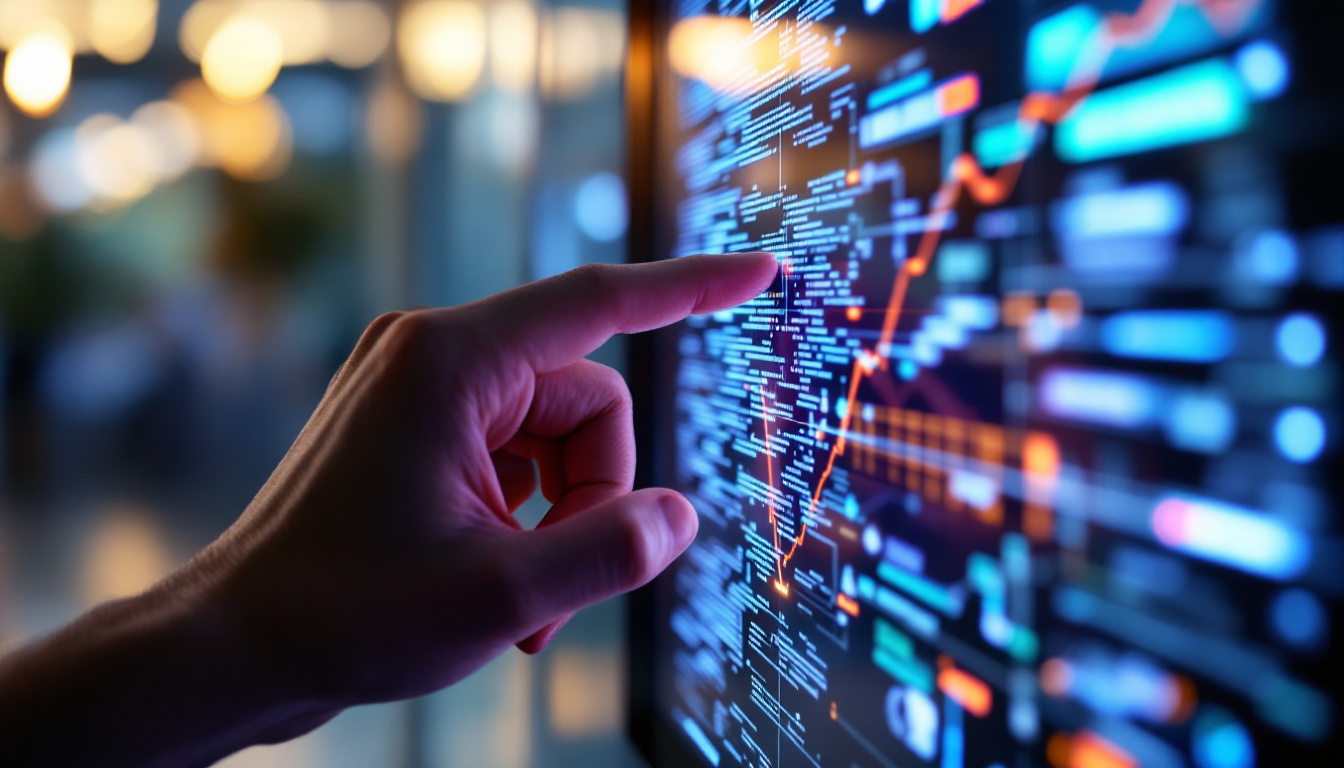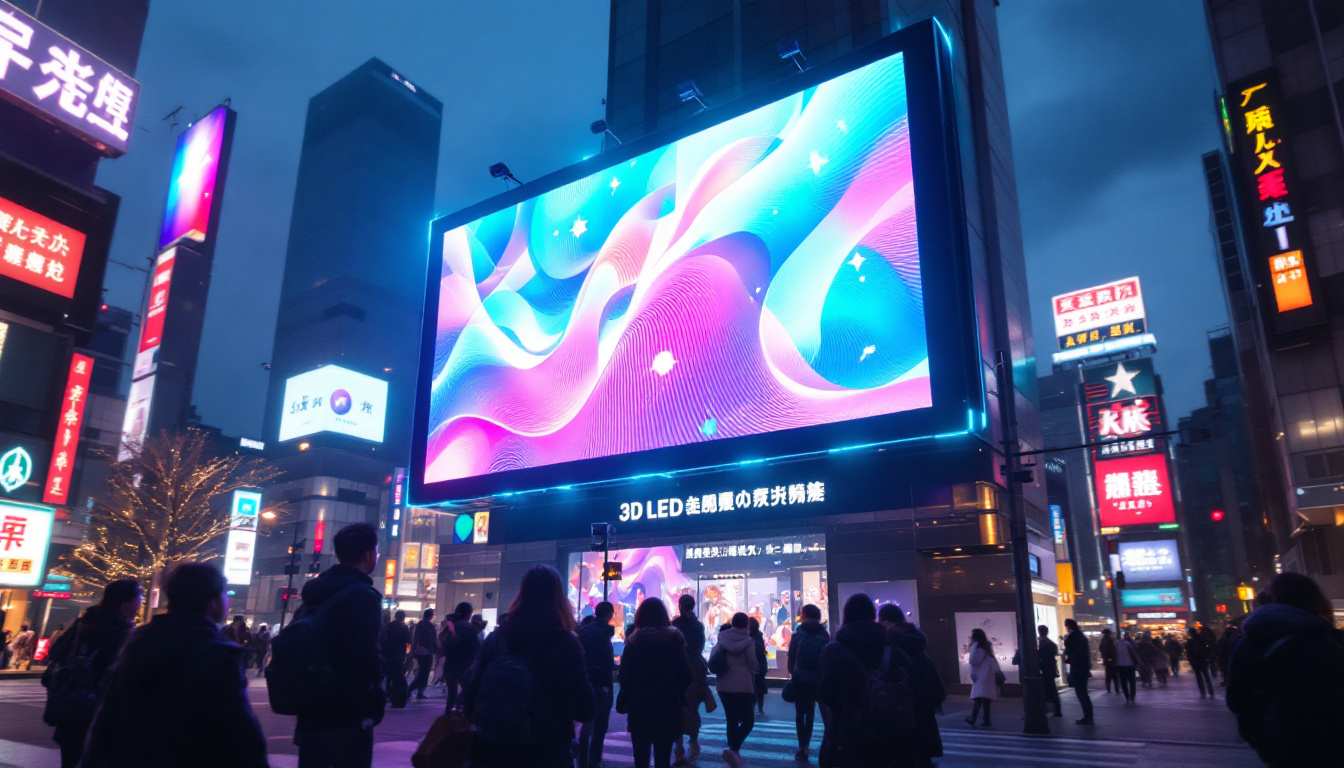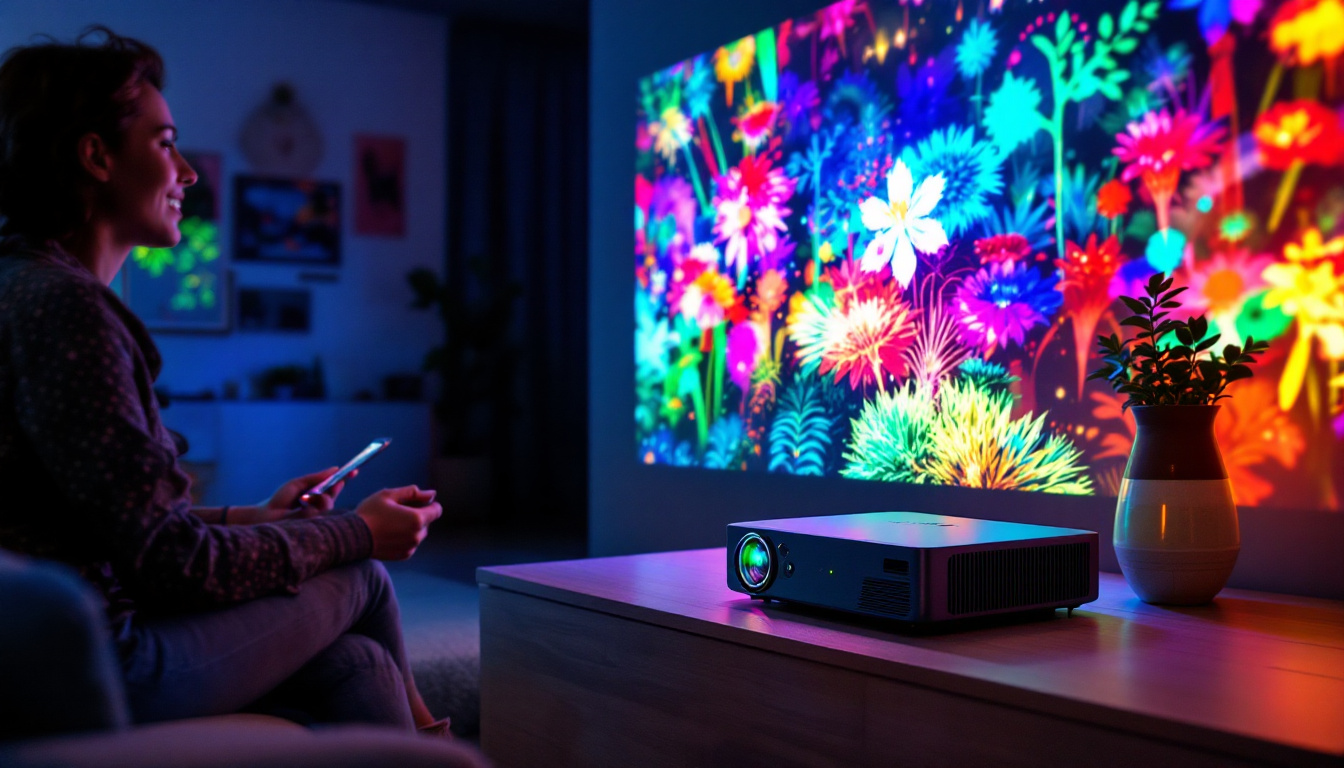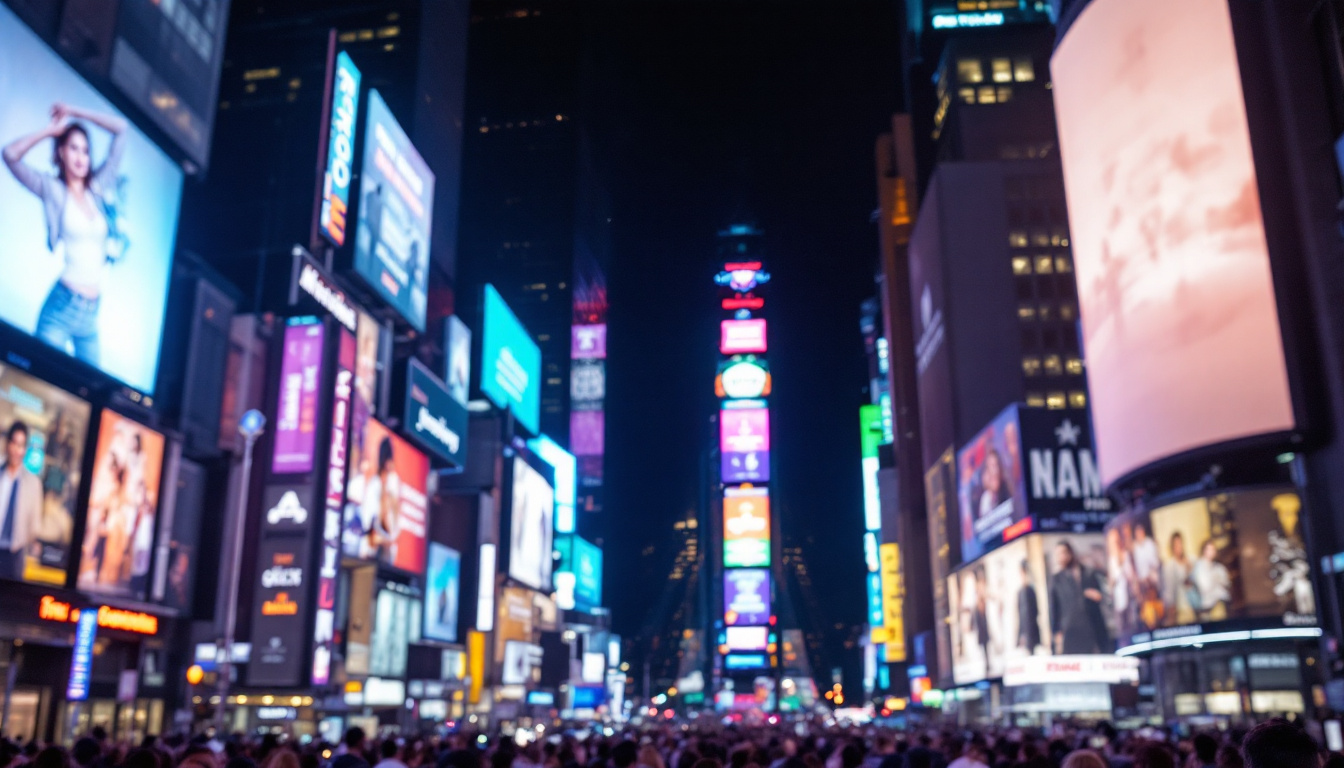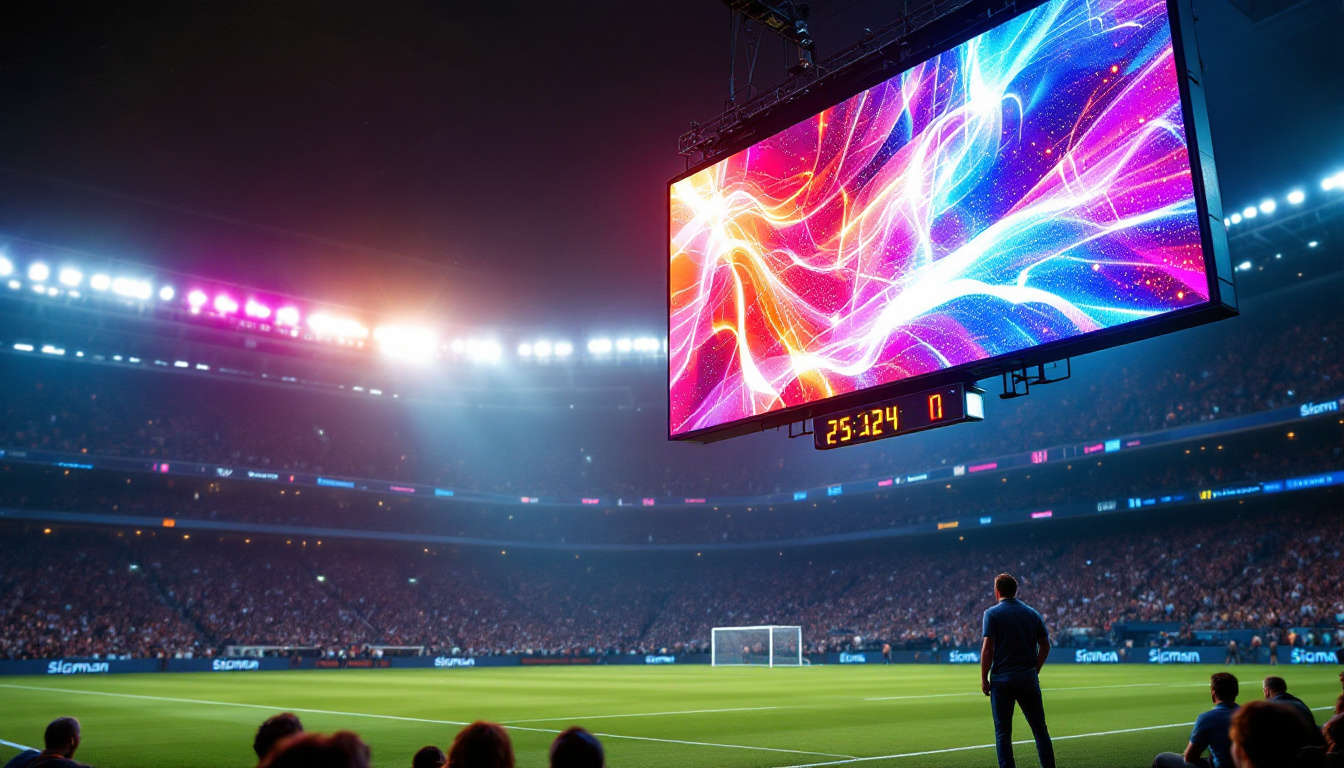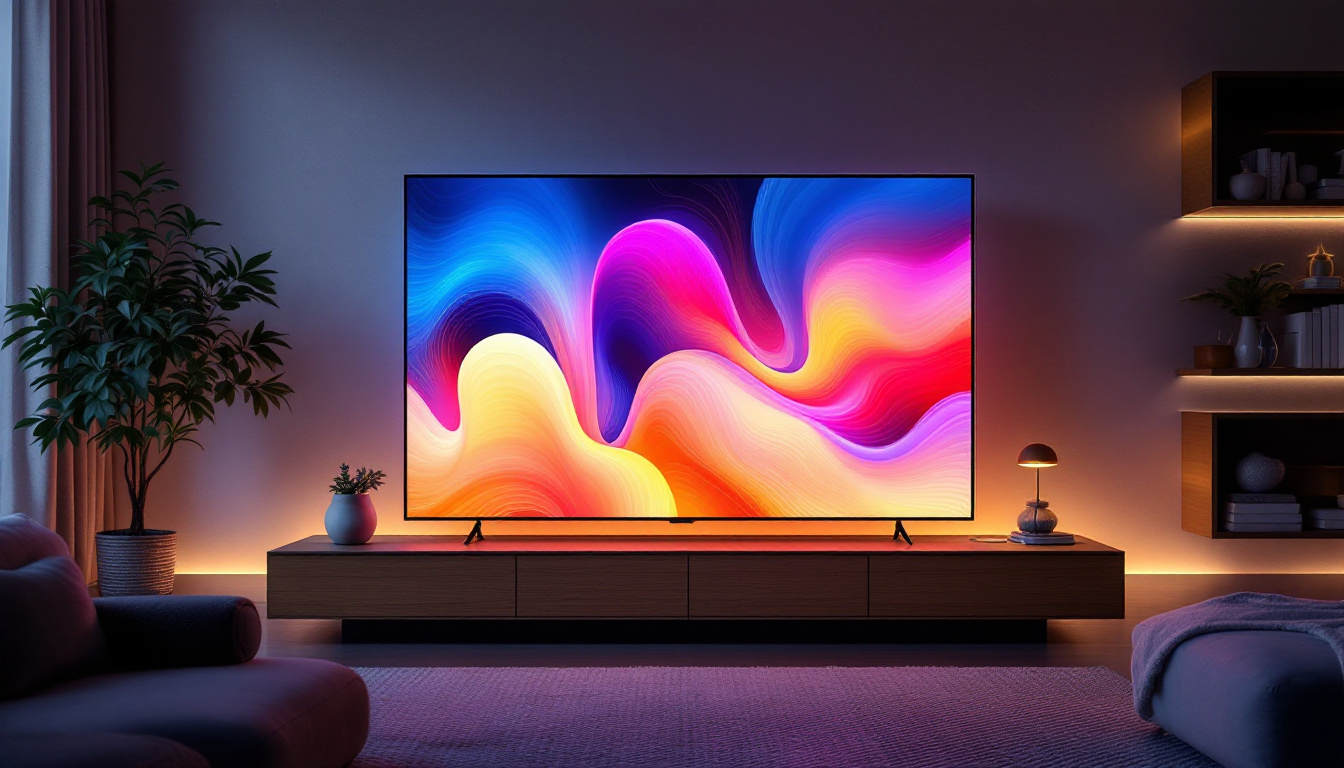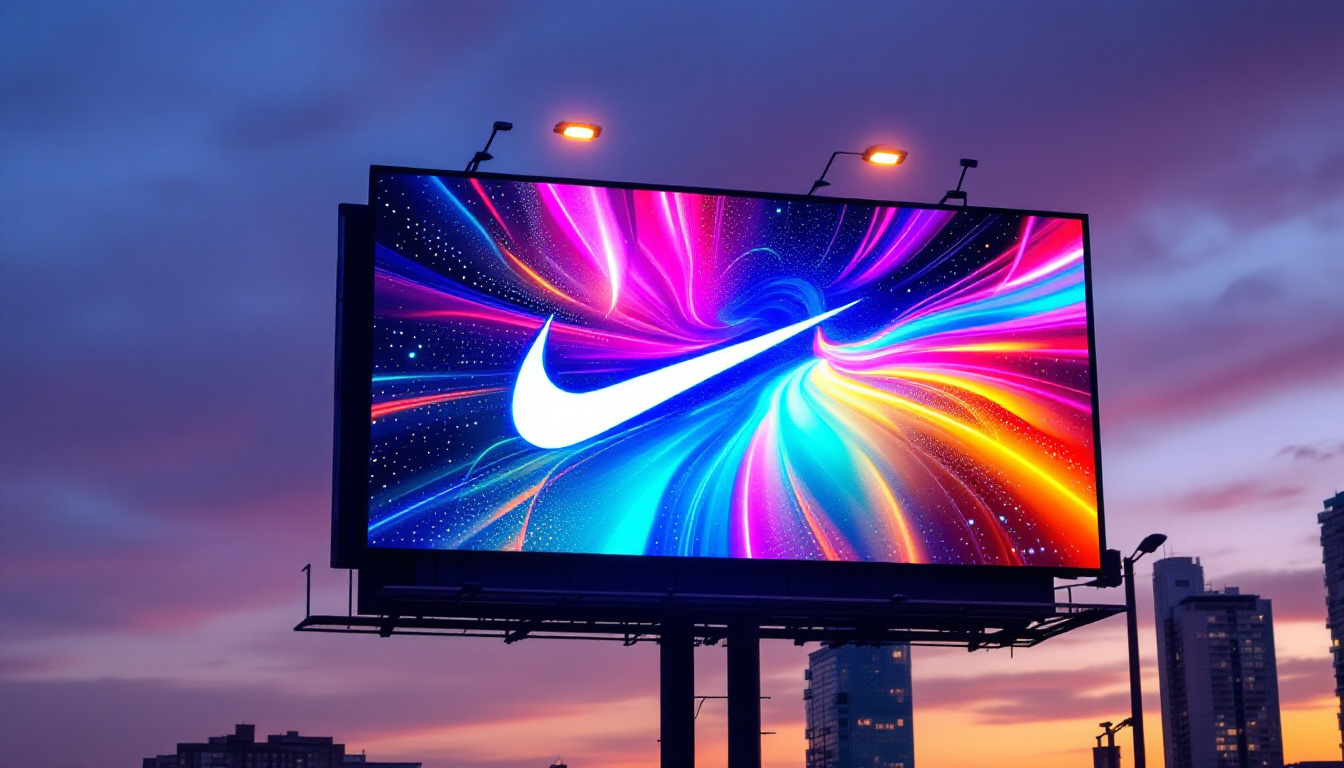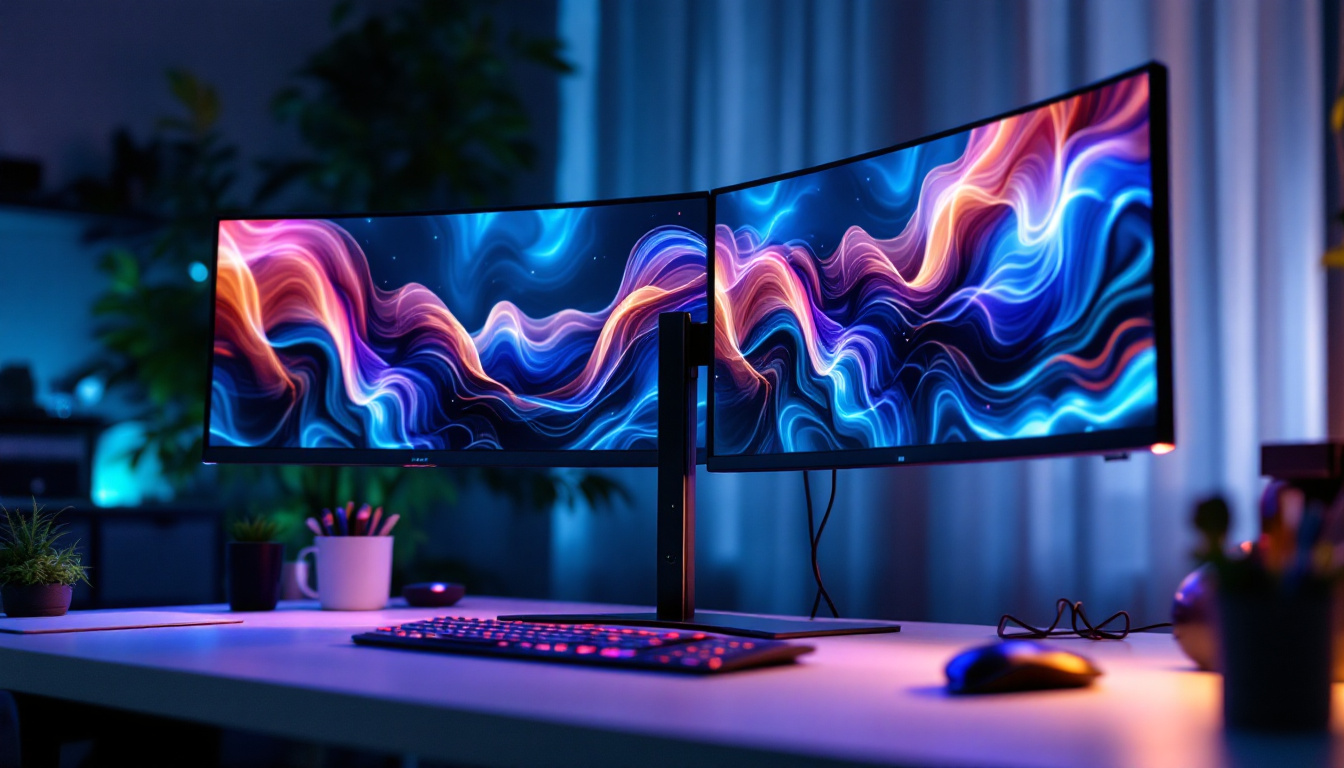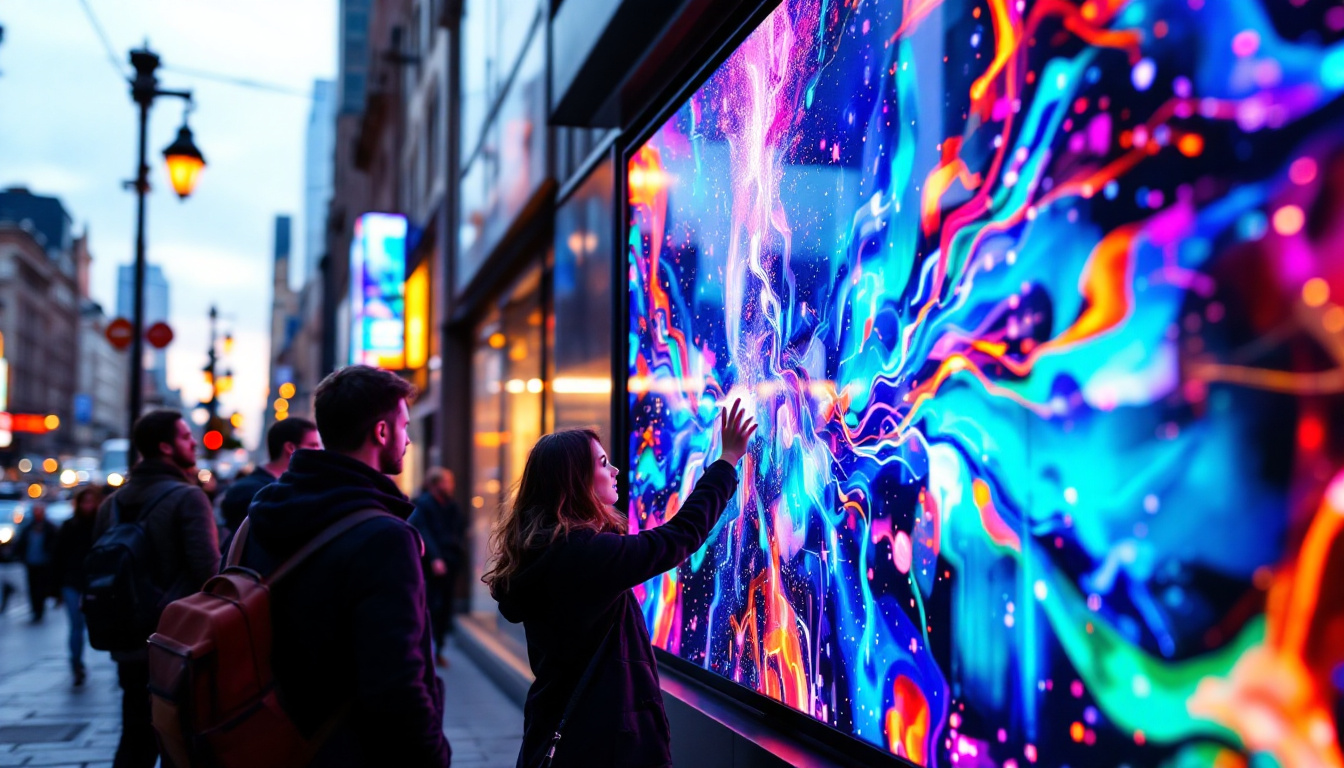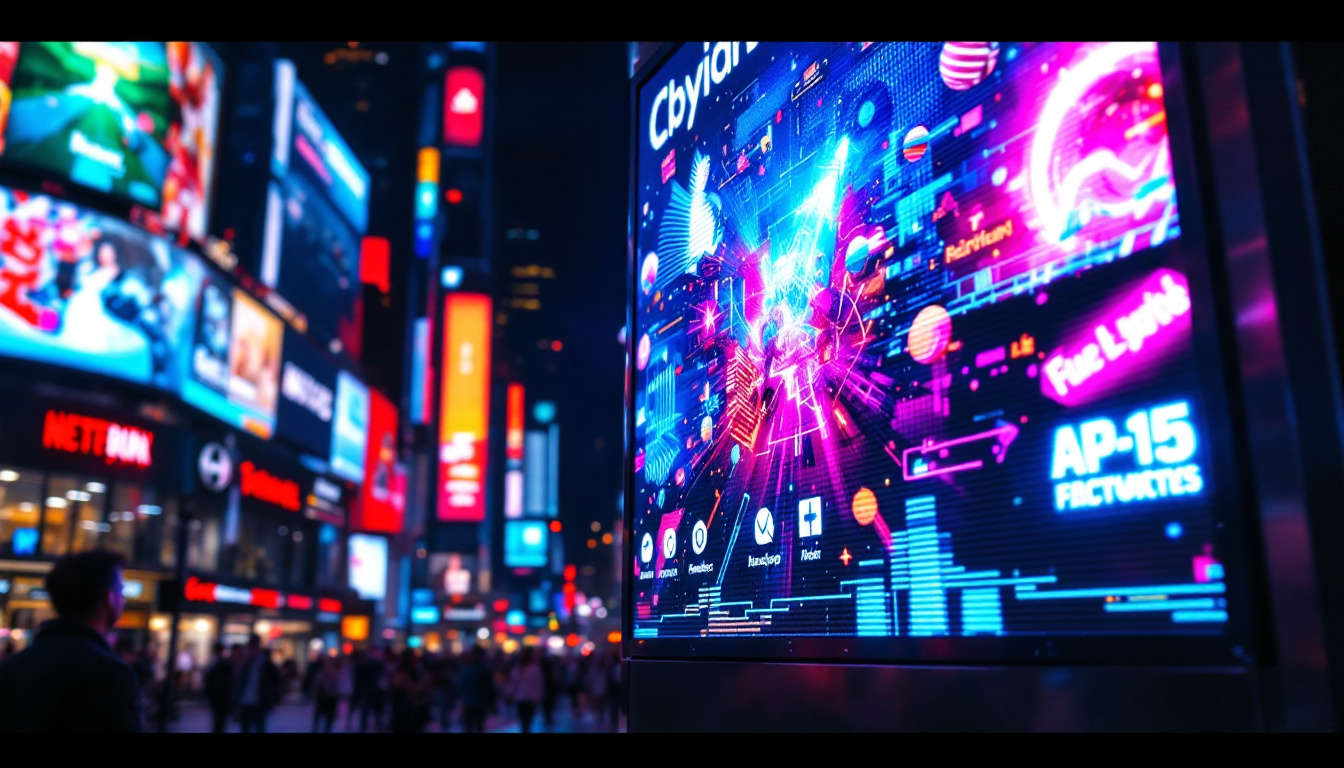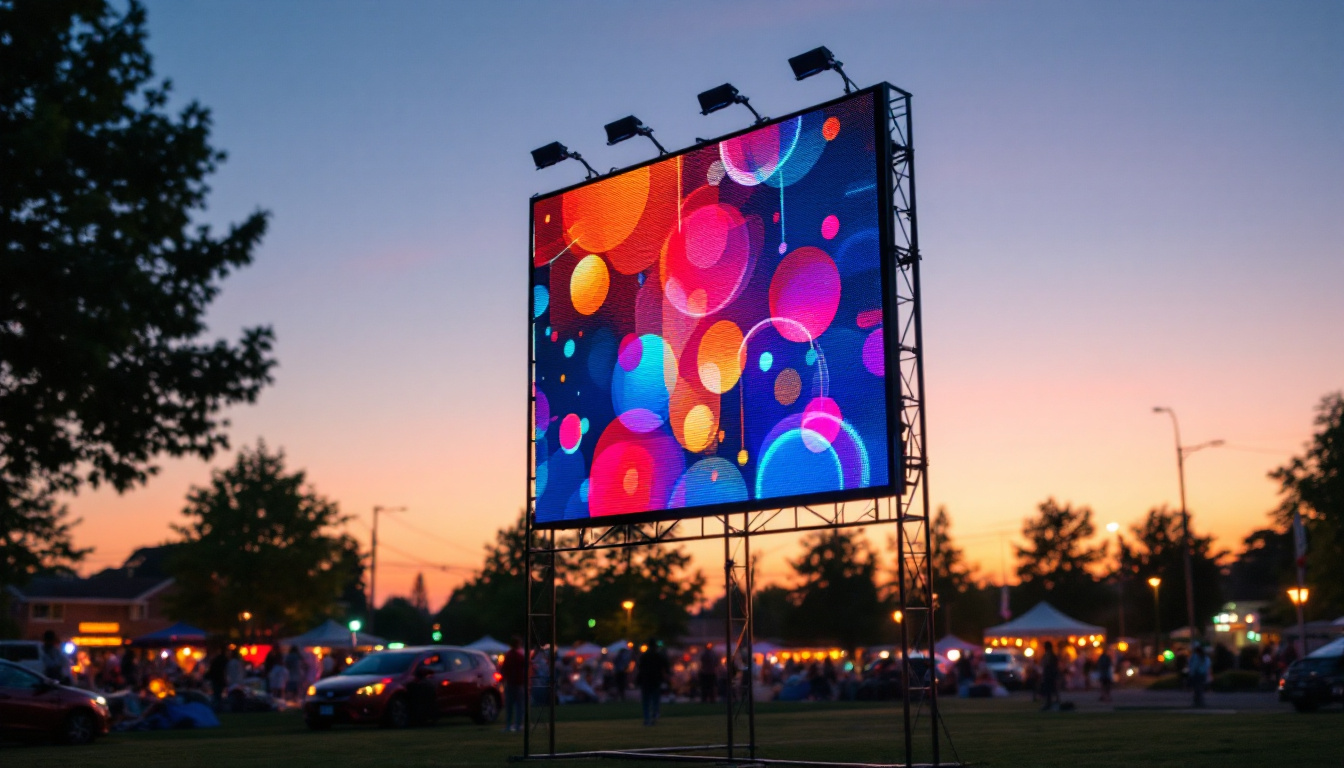In the realm of modern technology, LED displays have emerged as a pivotal component in various industries, ranging from advertising to entertainment and beyond. These displays are not only energy-efficient but also offer superior image quality, making them a preferred choice for many applications. This article delves into the intricacies of LED displays, exploring their functionality, types, advantages, and applications.
Understanding LED Technology
LED, or Light Emitting Diode, is a semiconductor device that emits light when an electric current passes through it. This technology has transformed the way visual information is presented, leading to the development of vibrant and dynamic displays. Unlike traditional incandescent bulbs, LEDs are more energy-efficient and have a longer lifespan, which significantly reduces maintenance costs. The shift towards LED technology has not only improved energy consumption in residential and commercial lighting but has also played a pivotal role in reducing carbon footprints globally. As cities transition to LED street lighting, they are witnessing lower energy bills and enhanced safety due to brighter illumination.
How LED Displays Work
The fundamental principle behind LED displays lies in the arrangement of tiny LED lights that form pixels. Each pixel consists of red, green, and blue (RGB) subpixels. By varying the intensity of these subpixels, a wide spectrum of colors can be produced. When these pixels are combined, they create the images and videos that are displayed on the screen. This ability to mix colors at the pixel level allows for stunning visual effects and seamless transitions, making LED displays a favorite choice for everything from digital signage to high-definition televisions.
LED displays can be categorized into two main types: passive and active matrix displays. Passive matrix displays utilize a grid of horizontal and vertical lines to control the pixels, while active matrix displays have a dedicated transistor for each pixel, allowing for faster refresh rates and better image quality. This distinction is crucial for understanding the performance and suitability of different LED display types for specific applications. Active matrix displays, for instance, are particularly advantageous in environments where rapid motion is common, such as in gaming or sports broadcasting, where clarity and responsiveness are paramount.
Types of LED Displays
LED displays come in various forms, each tailored to meet specific needs. The most common types include:
- Direct View LED Displays: These are large screens made up of individual LEDs that are visible from a distance. They are commonly used for billboards and large-scale advertising.
- LED Backlit Displays: These displays use LEDs to illuminate an LCD panel from behind, enhancing brightness and color accuracy. They are prevalent in televisions and computer monitors.
- Organic LED (OLED) Displays: A newer technology that uses organic compounds to emit light. OLED displays offer superior contrast ratios and color accuracy, making them ideal for high-end televisions and smartphones.
In addition to these common types, there are also specialized LED displays designed for niche applications. For example, flexible LED displays are gaining popularity in creative advertising and artistic installations, allowing for innovative shapes and designs that were previously impossible with traditional screens. Furthermore, microLED technology, which involves tiny individual LEDs that can be used to create ultra-high-resolution displays, is on the horizon, promising even greater advancements in display technology. These innovations not only enhance visual experiences but also open up new avenues for interactive and immersive media, making LED technology a continually evolving field.
Advantages of LED Displays
LED displays offer numerous advantages over traditional display technologies, making them a popular choice across various sectors. Understanding these benefits can help businesses and consumers make informed decisions when selecting display solutions.
Energy Efficiency
One of the most significant advantages of LED displays is their energy efficiency. Compared to traditional display technologies, LEDs consume considerably less power. This not only reduces electricity bills but also minimizes the environmental impact, making LED displays a more sustainable option. Furthermore, the reduced energy consumption contributes to lower carbon footprints, aligning with global initiatives aimed at promoting greener technologies. As businesses increasingly prioritize sustainability, the adoption of energy-efficient solutions like LED displays becomes a strategic advantage.
Brightness and Visibility
LED displays are known for their exceptional brightness, which makes them highly visible even in direct sunlight. This characteristic is particularly beneficial for outdoor advertising, where visibility is crucial for capturing the attention of passersby. The high contrast ratios of LED displays also contribute to improved image quality, ensuring that colors appear vibrant and details are sharp. Additionally, the ability to adjust brightness levels dynamically allows for optimal viewing experiences in various lighting conditions, enhancing the effectiveness of advertising campaigns and presentations. This adaptability makes LED displays a versatile choice for both indoor and outdoor applications, ensuring that messages are conveyed clearly and effectively, regardless of the environment.
Longevity and Durability
LED technology boasts an impressive lifespan, often exceeding 50,000 hours of use. This longevity translates to lower replacement costs and reduced maintenance efforts. Additionally, LED displays are more resistant to shock and vibration compared to traditional displays, making them suitable for a variety of environments, including outdoor settings and industrial applications. The robust construction of LED displays also means they are less prone to damage from extreme weather conditions, such as heavy rain or snow. This durability not only enhances their reliability but also ensures that businesses can maintain a consistent visual presence without frequent interruptions due to display failures. As a result, investing in LED technology can lead to significant long-term savings and operational efficiency.
Applications of LED Displays
The versatility of LED displays allows them to be utilized in a wide range of applications. From advertising to entertainment, their adaptability makes them a staple in various industries.
Advertising and Marketing
In the advertising sector, LED displays have revolutionized the way brands communicate with consumers. Digital billboards and signage can display dynamic content, allowing for real-time updates and targeted messaging. This capability not only enhances engagement but also provides advertisers with valuable analytics on viewer interactions.
Entertainment and Events
LED displays play a crucial role in the entertainment industry, particularly in concerts, festivals, and sporting events. Large LED screens are used to showcase live performances, provide information to attendees, and create immersive experiences. The ability to display high-resolution videos and graphics in real-time enhances the overall atmosphere of these events.
Corporate and Educational Use
In corporate settings, LED displays are used for presentations, meetings, and internal communications. Their clarity and brightness ensure that information is conveyed effectively to large audiences. Similarly, educational institutions utilize LED displays for teaching purposes, making lessons more engaging through visual aids and interactive content.
Future Trends in LED Display Technology
As technology continues to evolve, the future of LED displays looks promising. Innovations are being made to enhance performance, reduce costs, and expand the capabilities of these displays.
MicroLED Technology
MicroLED technology is one of the most exciting developments in the LED display industry. This technology involves the use of microscopic LEDs that can be arranged to form displays of any size or shape. MicroLED displays promise to deliver even higher brightness, improved energy efficiency, and better color accuracy than current LED technologies.
Flexible and Transparent Displays
Another emerging trend is the development of flexible and transparent LED displays. These displays can be bent or shaped to fit various applications, such as curved screens or innovative architectural designs. Transparent displays open up new possibilities for advertising and information dissemination, allowing content to be displayed on windows or glass surfaces without obstructing visibility.
Integration with Smart Technologies
The integration of LED displays with smart technologies is also gaining traction. This includes the use of IoT (Internet of Things) to connect displays with other devices, enabling real-time data sharing and interactive experiences. Such advancements are expected to enhance user engagement and streamline operations in various sectors.
Challenges Facing LED Display Technology
Despite the numerous advantages, LED display technology is not without its challenges. Understanding these obstacles is essential for stakeholders in the industry to navigate potential pitfalls.
Cost Considerations
While the prices of LED displays have decreased over the years, the initial investment can still be relatively high compared to traditional display technologies. This cost barrier can deter some businesses from adopting LED solutions, particularly small enterprises with limited budgets.
Environmental Concerns
Although LED displays are more energy-efficient, the production and disposal of LED components can pose environmental challenges. The use of hazardous materials in some LED manufacturing processes raises concerns about sustainability. Efforts are being made to develop eco-friendly alternatives and improve recycling methods to mitigate these issues.
Technical Limitations
Technical limitations, such as color accuracy and viewing angles, can also affect the performance of LED displays. While advancements are being made, ensuring that displays maintain consistent quality across various conditions remains a challenge. Manufacturers must continue to innovate to address these limitations and meet consumer expectations.
Conclusion
LED displays have undoubtedly transformed the landscape of visual communication, offering unparalleled advantages in terms of energy efficiency, brightness, and versatility. As technology continues to advance, the potential applications for LED displays are expanding, opening new avenues for innovation and engagement.
While challenges remain, the ongoing development in LED technology, including microLED and flexible displays, promises to enhance the capabilities of these systems further. For businesses and consumers alike, understanding the intricacies of LED displays is essential for making informed decisions in an increasingly digital world.
In summary, LED displays are not just a trend; they represent a significant leap forward in display technology, with the potential to shape the future of communication and interaction across various sectors.
Discover Cutting-Edge LED Displays with LumenMatrix
Ready to elevate your visual communication with the latest in LED display technology? Look no further than LumenMatrix, a pioneer in crafting LED display modules that bring your brand to life. Whether you’re seeking to captivate with an Indoor LED Wall Display, make a statement with an Outdoor LED Wall Display, or innovate with Custom LED Display solutions, LumenMatrix has you covered. Experience the power of enhanced engagement and crystal-clear messaging. Check out LumenMatrix LED Display Solutions today and transform the way you connect with your audience.

